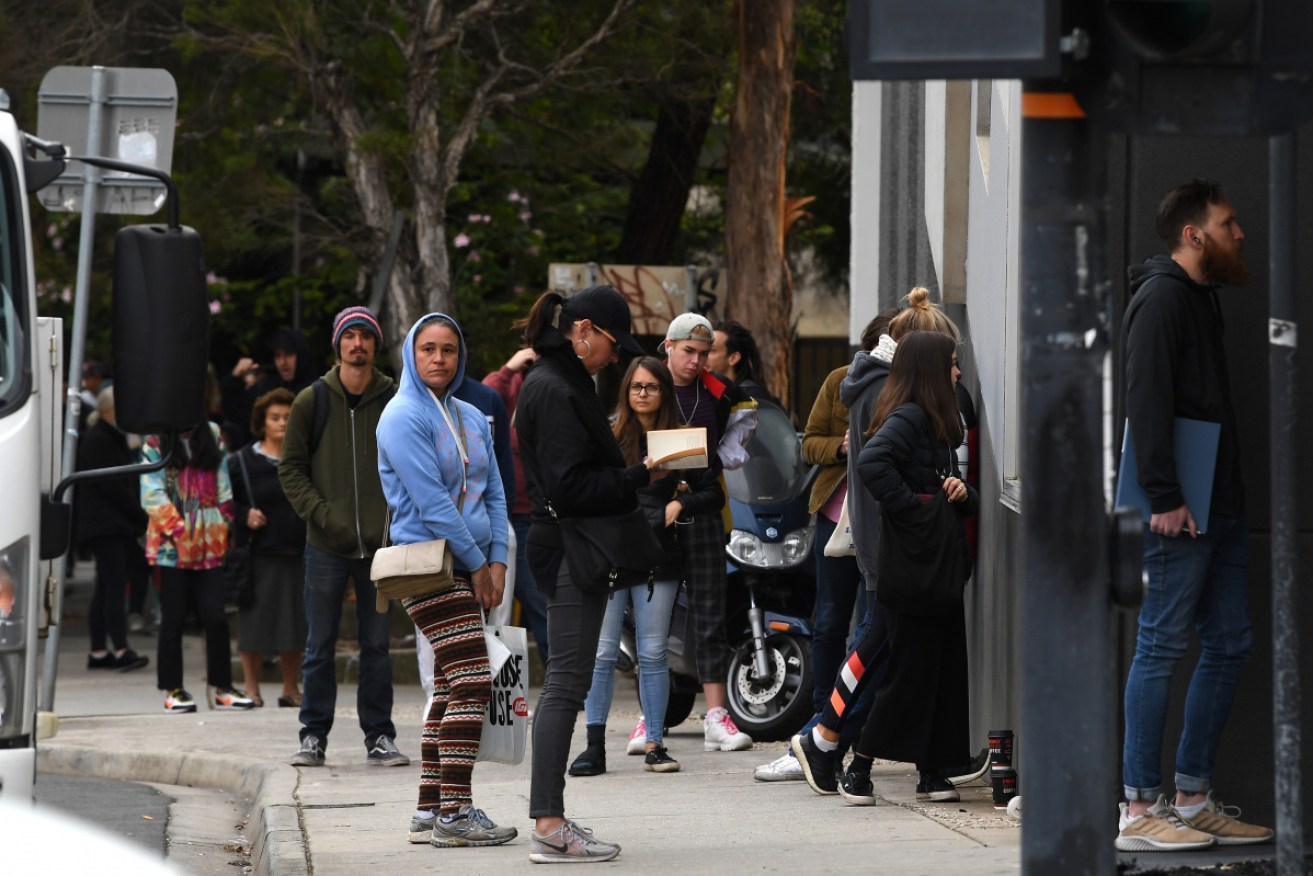Unemployment rate jumps as coronavirus shutdown begins to bite


More than half a million people lost their jobs between March and April. Photo: AAP
Prime Minister Scott Morrison says the loss of nearly 600,000 jobs in April – the biggest monthly rise in unemployment on record – is “devastating” for Australian families and communities.
“[It’s a] tough day for Australia, a very tough day,” the Prime Minister said.
“Almost 600,000 jobs have been lost, every one of them devastating for those Australians, for their families and communities.
“A very tough day, terribly shocking, although not unanticipated.”
Australia’s unemployment rate jumped a full percentage point after 594,300 workers were forced out of jobs by the coronavirus pandemic in April.
The latest ABS data show unemployment hit 6.2 during the month, up considerably from the 5.2 per cent recorded in March.
The biggest rise in unemployment was in Tasmania, where the jobless rate rose to 6.2 per cent – in line with the national rate – from 4.9 per cent.
Queensland hit 6.8 per cent, from 5.7 per cent, while New South Wales rose to 6.0 per cent, from 4.9 per cent.
Victoria’s jobless rate also rose to 6 per cent from 5.2 per cent, South Australia hit 7.2 per cent from 6.3 per cent, Western Australia 6 per cent from 5.4 per cent, Northern Territory 6 per cent from 5.5 per cent, while the Australian Capital Territory rose to 4.2 per cent from 3.2 per cent.
South Australia now has the highest unemployment rate in the country, with Queensland not far behind, while the ACT has the lowest.
Although it’s a troubling sign for the economy, it’s significantly below earlier predictions the unemployment rate would break past 8 per cent.
But ABS head of labour statistics Bjorn Jarvis noted the jobless rate would have been much higher if not for the “larger than usual” 2.4 per cent fall in the participation rate.
The participation rate represents the total number of Australians either in a job, or actively looking for work.
The unemployment rate represents the number of those people looking for work who don’t find any.
Fewer people looking for work drives unemployment down – not because there are fewer unemployed people, but because more of those without jobs are choosing not to ‘participate’.
“This means there was a high number of people without a job who didn’t or couldn’t actively look for work or weren’t available for work”, Mr Jarvis said.
Looking at the underlying numbers, the number of lost jobs actually exceeded the 550,000 forecast by economists prior to the release of Thursday’s data.
More losses to come
More job losses are expected on top of the nearly 600,000 lost in April.
While the percentage numbers don’t align with forecasts, the raw numbers put Australia on track to hit 10 per cent unemployment for the June quarter, as predicted by Treasurer Josh Frydenberg.
That would equate to 1 million Australians finding themselves out of a job.
“The economic shock facing the global economy from the coronavirus is far more significant than what was seen during the global financial crisis over a decade ago,” Mr Frydenberg said in April.
“In the absence of the $130 billion JobKeeper payment, Treasury estimates the unemployment rate would be 5 percentage points higher [for the June quarter] and would peak at around 15 per cent.”
AMP Capital senior economist Diana Mousina said few industries would be immune to the losses.
Ms Mousina warned 41 per cent of jobs faced “a high risk of lower work hours, being stood down or terminated” in the current environment, and backed Mr Frydenberg’s forecasts.
“We see the unemployment rate rising to 10 per cent in the June quarter and ending the year at around 8.5 per cent – higher than pre-coronavirus,” she said.
“It is difficult to see hiring springing back to ‘normal’ given the hit to corporate profits and continued restrictions around social distancing and travel.”









